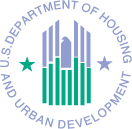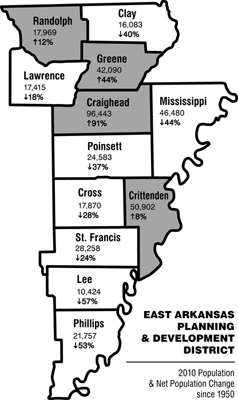Building Communities' Current Work Regions

Nearly sixty communities across America are right now mobilizing using the Building Communities strategic planning approach. These communities are very diverse, each with its own set of opportunities and challenges. And yet each is seizing the opportunities unique to itself, strategically leveraging its competitive advantages to better its economic condition and enhance the quality of life it offers to its citizens.
Our times are not ordinary times and it takes more than a business-as-usual approach to meet those times head-on…and succeed. The Building Communities strategic planning approach is anything but “business as usual.” If you are ready to envision and enact your future, we are ready for you.
 |
| Regional work supported by the U.S. Department of Housing and Urban Development—Office of Sustainable Housing and Communities |
As of early 2013, Building Communities is heavily involved in three very diverse regions of the United States assisting remarkable people in planning for their future. In 2012, we completed 37 Plan Weeks, setting the stage for tremendous community improvement by hundreds of community development professionals and local volunteers.
In each case, we met in a different community to conduct Plan Week—our 14-hour process to help local leaders envision and enact their desired future. In addition, over 1000 people attended Voice of the Community meetings to provide their input on strategies, initiatives and projects. Below are brief synopses of the regions in which we are currently working.
Western North Dakota
For the last four years, western North Dakota has been one of the fastest growing rural regions in the United States. Cities are doubling their populations in three years. Thousands of jobs are going unfilled despite caravans of workers streaming into the region. Crew camps of 2,500 workers are springing up overnight. Available housing is virtually non-existent, and triple the price it was two years ago—if it can be found at all. Asphalt-covered farm roads are crumbling under the weight of unprecedented traffic, most of which is commercial and industrial trucks. Motel room rates have nearly tripled since 2009. Planning commissions that used to meet quarterly now meet monthly—with six-hour agendas. In short, western North Dakota is exploding. Why? Oil!
The certainty of a huge volume of oil in the Bakken and Three Forks Formations, combined with strong oil prices and a need to significantly decrease the dependence of the United States on foreign sources, has prompted development of what is effectively the largest construction project—covering 19 rural counties—currently underway in the United States.
Further, this development is occurring in one of the most rural stretches of land in the entire nation. Of the 19 counties, two have less than 1,000 persons, and only three have more than 9,000 persons. Only three of the 116 cities and towns have a population greater than 3,200!
Western North Dakota infrastructure was not built in anticipation of the growth that is now occurring. While the economics of the region are the envy of much of the rest of the nation, the impacts on the local citizenry are enormous (both positive and negative). Added to all of this was a record-breaking spring 2011 rain that flooded the largest city in the region, Minot, which is still suffering with the loss of over 4,000 homes. Further, roads are literally still shifting and heaving due to unprecedented precipitation.
Yet, people in the region still see and embrace a positive future. While much of the rest of the nation is experiencing housing foreclosures, the value of existing homes is escalating dramatically in the western North Dakota region. For the first time in 80 years, the area is experiencing growth. The population of the 19-county region, currently at 172,000, has declined every decennial census count since 1930. Growth management planning has not been a required discipline in North Dakota—until now.
It is not too late to make a critical and positive difference in preparing for and managing this unprecedented growth but the timing is critical. The pace and level of impact from the rapidly expanding oil industry has started with North Dakota’s northern counties (the Bakken Region extends west into Montana and north into Canada), and is moving south. A second wave of oil-related investment and growth is anticipated from the Three Forks and Tyler Formations.
The region is conducting a seven-initiatives approach to address emerging growth challenges: 1) locally based Building Communities economic development strategic plans, 2) a regional sustainability plan, 3) development of an infrastructure agenda, 4) identifying best practices for local planning policy and codes, 5) webinars on other fast-growth regions in US history, 6) project schematics, and 7) plan implementation.
Combined, this initiative is designed to: 1) address immediate, short-term needs of communities and counties to meet growth management challenges; 2) capitalize on one of America’s strongest rural economies for entrepreneurial development; 3) set the stage for economic diversification based on the strength of the oil and agricultural industries; 4) establish a sustainable, diversified economy when the oil boom inevitably goes bust, as has been the case with virtually every local extractive industry in the history of the West: 5) retain and support the existing economic base of agriculture, manufacturing and tourism; and 6) support livability and environmental objectives.
Building Communities is the lead planning company for this historic project. Over 20 local strategic plans have already been completed, the 2013 North Dakota legislature has already considered infrastructure investment recommendations and the Regional Planning phase is underway.
East Arkansas
A quick glance at the map below showing the population gains and losses in the 12 counties of East Arkansas starkly reveals the economic winners and losers. The poor counties are getting poorer and less populated. The counties with greater opportunities are gaining population but even these counties remain relatively poor. This is nothing new. In fact, it is an extension of the challenging—in many places desperate—economic circumstances that have marked the Delta for generations.
The mechanization of agricultural production in the 20th century fundamentally altered the old balance in the region’s economy. Fewer people are now needed to tend and harvest crops, as well as prepare and package them for market. With few employment alternatives on the farm, a significant population decline began in the late 1940s. During the period from 1950-1970, it is estimated that more than 200,000 people left the region—only 390,000 remain today. In fact, the out-migration of thousands of people during the last half-century is the most dramatic theme of that period.
The largest percent of population loss was among African Americans, which accounted for 30% of the District’s population in 1950, and fewer than 25% today. Those who left the region were likely pulled away from the Delta by a search for opportunities elsewhere, with those who stayed losing even the former opportunities that kept them in the Delta. Jobs have suffered, as have other opportunities for economic development such as education. In fact, the percent of persons with a bachelor’s degree or higher is only 43% of the national average. The purpose of the planning grant is to reinvigorate the opportunities for the population.
Although various forms of outside assistance have been offered and attempts made to improve the economy of this impoverished area, no initiative has been able to counter the sweeping economic impact of the economic megatrends that have challenged the region for 60 years—and arguably since the Civil War. What is different today is the existence of a locally based organization that serves all 12 counties and has an aggressive posture toward making a substantial positive difference for the region: the East Arkansas Planning and Development District. Although the District has existed since 1967, new leadership and staffing in 2011 has brought this organization to the forefront to effectively reverse the region’s decline—and to envision and enact a sustainable future.
Notably, not the entire region is in decline. The largest city, Jonesboro, has a relatively vibrant, growing economy. Indeed, in the world of “have-nots,” there are communities that “have” greater stability, even though the “haves” are in need of greater long-term planning and opportunities.
Building Communities is the lead planning consultant for the region, and has completed more than 20 local plans, with several more projects soon to be started.
 Building Communities will also write the Regional Plan for Sustainable Development, which will help mobilize the plans and resources needed to reverse the long-term economic losses of the region.
Building Communities will also write the Regional Plan for Sustainable Development, which will help mobilize the plans and resources needed to reverse the long-term economic losses of the region.
Our work in the region is referenced in reNew East Arkansas' 2012 annual report (15 MB) and is described as "energizing and empowering." We are grateful to contribute to the future of the East Arkansas region in a meaningful way. reNew East Arkansas website
Northeast Arizona
Apache County, Arizona is at the center of America’s largest high-poverty regions. Of the 3,140 counties in the United States, only nine are poorer. The map shows America’s 100 poorest counties by per capita income. The low per capita income translates into diminished resources for economic and quality-of-life advancements.
Arizona has the second highest housing foreclosure rate in the nation, further impacting the county directly by depressing housing values, and indirectly by diminishing the buying power of visitors from the urban areas of Arizona who travel to the region.
In Apache County, 73% of the population is American Indian. The Native American population has dramatically higher rates of poverty, more persons per household and more significant health issues than the US population overall.
While 80 persons reside per square mile in America, only six persons per square mile live in Apache County, which is larger than the State of Massachusetts. This frontier territory is some of the most rural land in the United States. Access to even the most basic services is often challenging for a large number of residents. Native Americans frequently live in homes without running water, electricity and other modern technology. Travel distances to health care, foodstuffs and fuel are over 100 miles one-way for many residents.
Recognizing these challenges, Apache County applied for funding from US Housing and Urban Development in 2010. The Northeast Arizona Economic Development Planning Group was formed to develop a plan for community and economic development. Planning efforts in four communities, two White Mountain Apache Tribe villages, two Hopi Tribal villages, three Navajo Nation villages, plus the Navajo Nation Building Summit in the summer of 2012 have yielded specific community and village-based plans to reverse the desperate economic conditions. Additionally, there were 20 Quality-of-life Initiatives chosen by the communities and 75 Economic Development Strategies selected for implementation.
The Navajo Nation Summit was the largest nationwide planning effort conducted for the tribe in generations. Action plans were developed by over 300 attendees in 11 different community sectors, including health care, infrastructure and education.
Building Communities has facilitated every planning meeting and worked with local leaders to set the stage for the implementation of the plans.
| Regional Plan | ||||||||||||||||||||||||||||||
|
||||||||||||||||||||||||||||||
| Community Plans | ||||||||||||||||||||||||||||||
|
||||||||||||||||||||||||||||||
We aim to be assisting communities and regions in all fifty US States by 2015. If you feel that your community or region could benefit from participating in the Building Communities planning process, please call us today.
©2025 Building Communities, Inc.






















